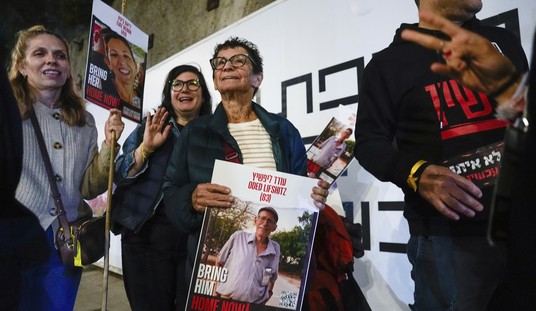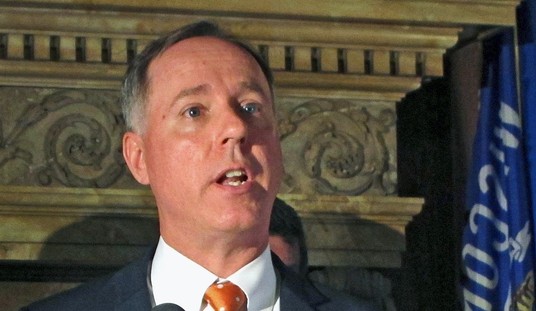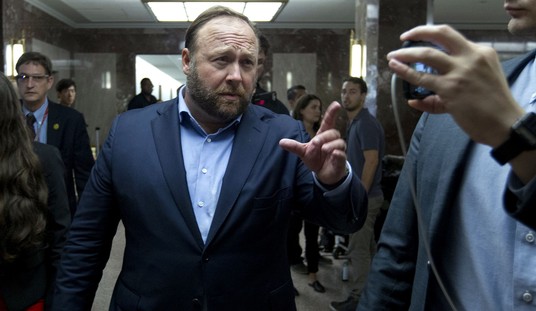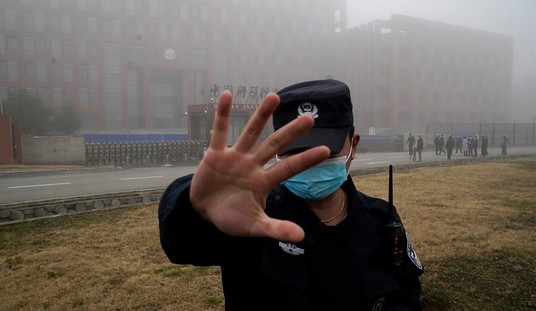Ed already flagged this graph in his write-up of today’s ABC/WaPo tracking poll but I want to put it in context. Or, rather, Steve Kornacki wants to put it in context and I’m happy to rip him off because he’s made a point that deserves some attention.

An unenthusiastic vote counts as much as an enthusiastic one in the voting booth, but the trick for Hillary is getting those unenthusiastic voters out to the polls in the first place. If her ground-game advantage over Trump is as great as it’s been cracked up to be, maybe relative enthusiasm won’t matter as much this year. But that’s where Kornacki comes in — look back at ABC/WaPo tracking polls for the last three presidential cycles and you’ll find that the winning candidate was also the candidate with a higher share of “very enthusiastic” voters every time. In late October 2004, Dubya led John Kerry on that metric 60/50. Four years later, with two weeks to go before the election, Obama led McCain 70/39(!). And in 2012, a year in which both sides were enthusiastic, O led Romney 69/61. If that trend holds and nothing unusual happens over the next seven days to turn his advantage in enthusiasm around, Trump wins the presidency. That’s why Hillary fans are so freaked out about the FBI’s announcement last Friday: Although the news might not have changed many votes, it may put a major dent in her turnout by reminding unenthusiastic Hillary voters what they don’t like about her. Kill her base’s enthusiasm for her and how many votes that might otherwise have been banked next Tuesday end up being left on the sofa at home?
As I say, though, the major caveat here is that Trump isn’t a traditional candidate. Bush and Obama not only had enthusiasm on their side, they had top-notch GOTV operations. Trump doesn’t. If his enthusiasm advantage is worth, say, three extra points to him but Clinton’s ground-game advantage is worth three extra points to her, it’s a push and he may end up losing anyway. Not all enthusiasm is created equal either. Remember yesterday’s post about lower than expected turnout this year among blacks but higher than expected turnout among Latinos? If blacks don’t turn out for Hillary in Georgia then Trump wins that state in a waltz. But that doesn’t help him much; he was always expected to win there. Meanwhile, if Latinos turn out in droves for Hillary in Nevada and Colorado, where they make up large minorities of the total population, Trump may be cooked. He needs one, and ideally both, of those purple states to have a chance at national victory. Hillary will happily accept lower enthusiasm among her base in red states if she’s getting higher enthusiasm in swing states. It’s 50 state elections, remember, not one national election.
But the national trends are hopeful for Trump. He’s down to trailing by a mere 2.2 points in RCP’s four-way average today, exactly the sort of narrow margin that makes data nerds nervous about a surprise on Election Day. Ten days ago, they were confident she’d win even if they couldn’t be sure of the margin. Given the ways they have of measuring expected turnout by key groups — blacks, Latinos, working-class whites, young adults, and so on — they could safely say their turnout estimates wouldn’t be off by six percent, which was Hillary’s lead at the time. Could they be overestimating Democratic turnout and/or underestimating Republican turnout by two points, though? Sure. If this holds until next Tuesday, Trump will have a meaningful chance of an upset. Worth noting, though: Not all polling averages have the race as tight as RCP’s does. FiveThirtyEight, which “weights” polls according to whether the pollster’s data typically leans a little left or right, has Clinton up by 3.9 points nationally. And HuffPo’s average has her up 5.6 points(!), although their methodology relies on something called “smoothing” to arrive at the overall number. Essentially, HuffPo tries to discount polls that appear to be outliers and instead looks for meaningful trends across various surveys before concluding that the numbers for each candidate really have moved. They don’t think they’ve seen enough movement towards Trump to conclude that the race has changed materially. Yet. Without “smoothing,” though, HuffPo has Clinton ahead by … one-tenth of a point.
I’ll leave you with this, for what it’s worth, from journalist/Podesta pen pal John Harwood:
top GOP pollster: "Trump recovering, not enough to dig out of hole. superior HRC data/digital/GOTV too much to overcome. GOP holds Senate."
— John Harwood (@JohnJHarwood) November 1, 2016








Join the conversation as a VIP Member